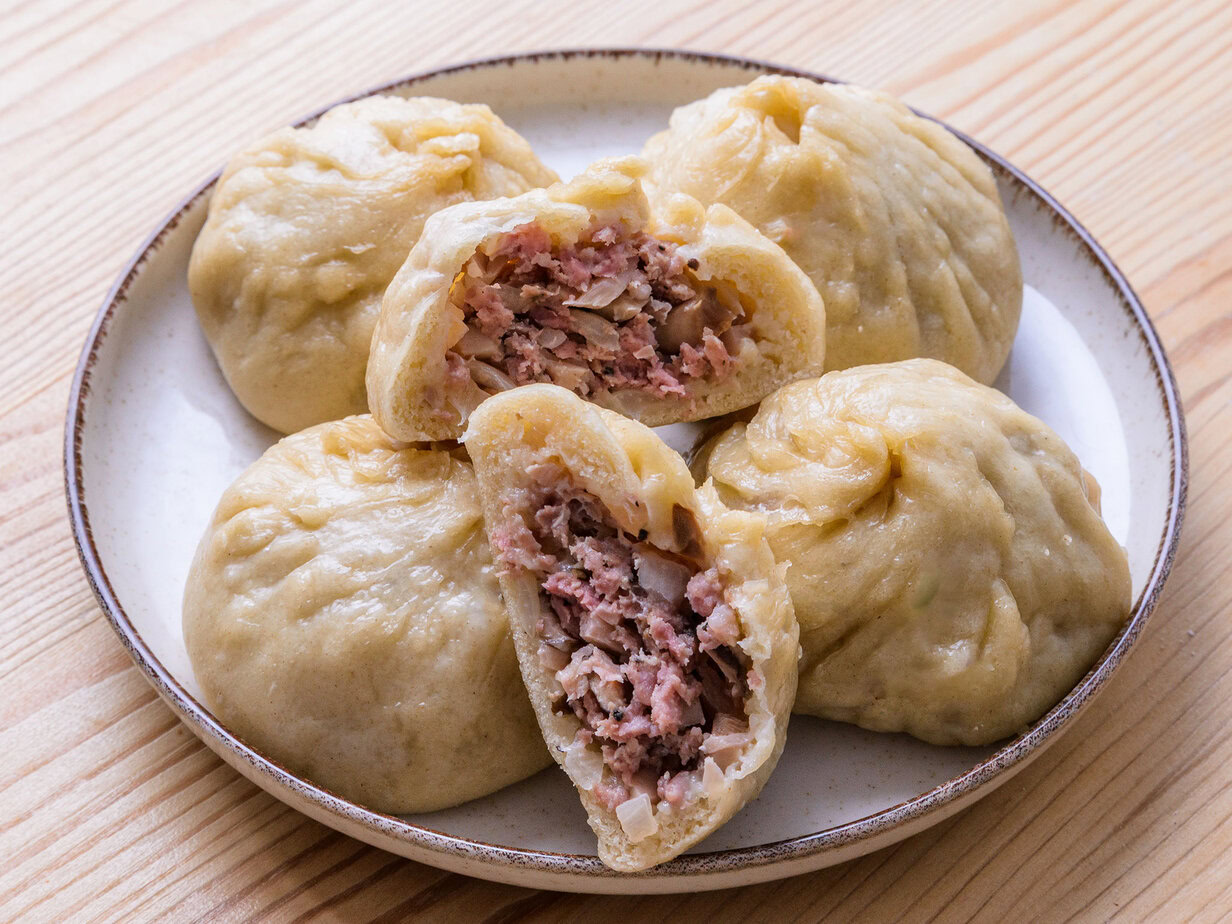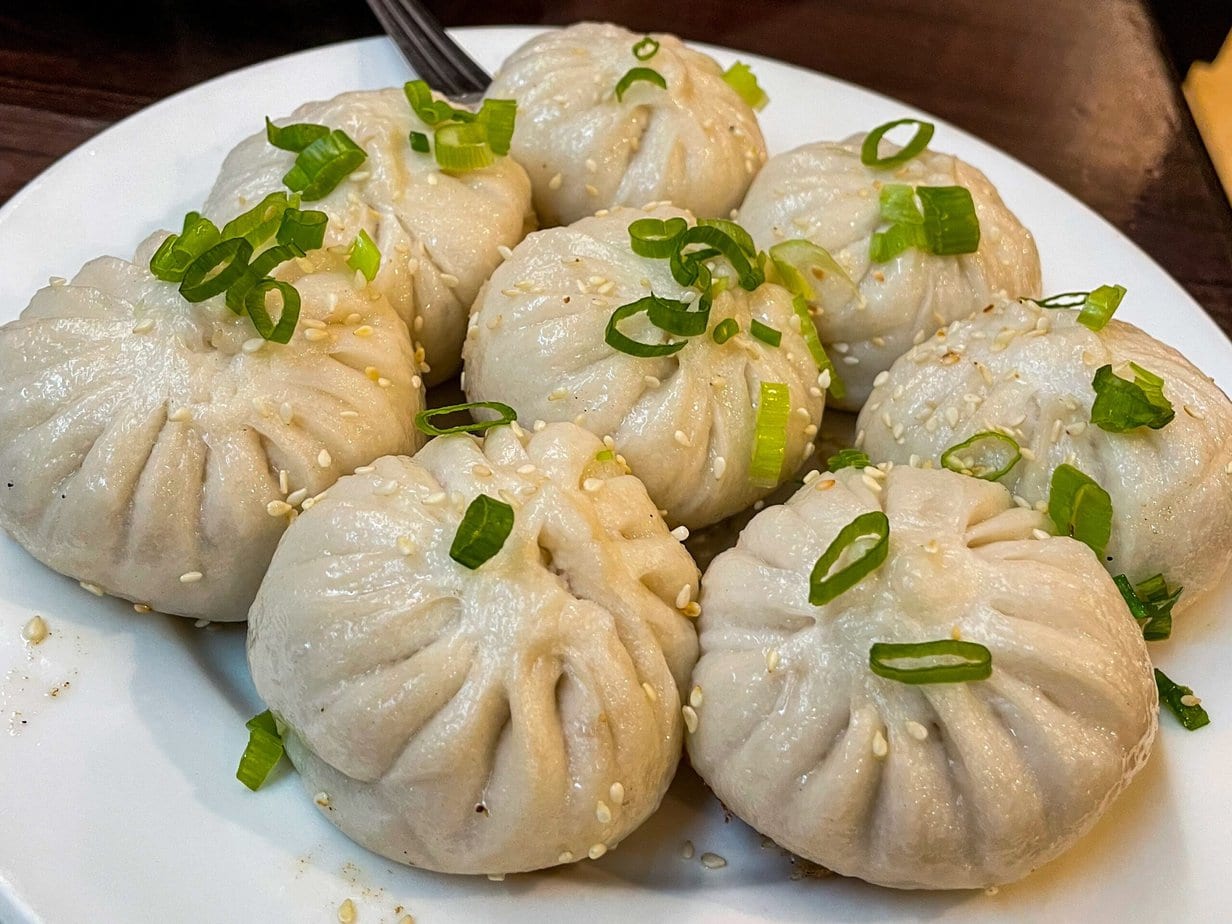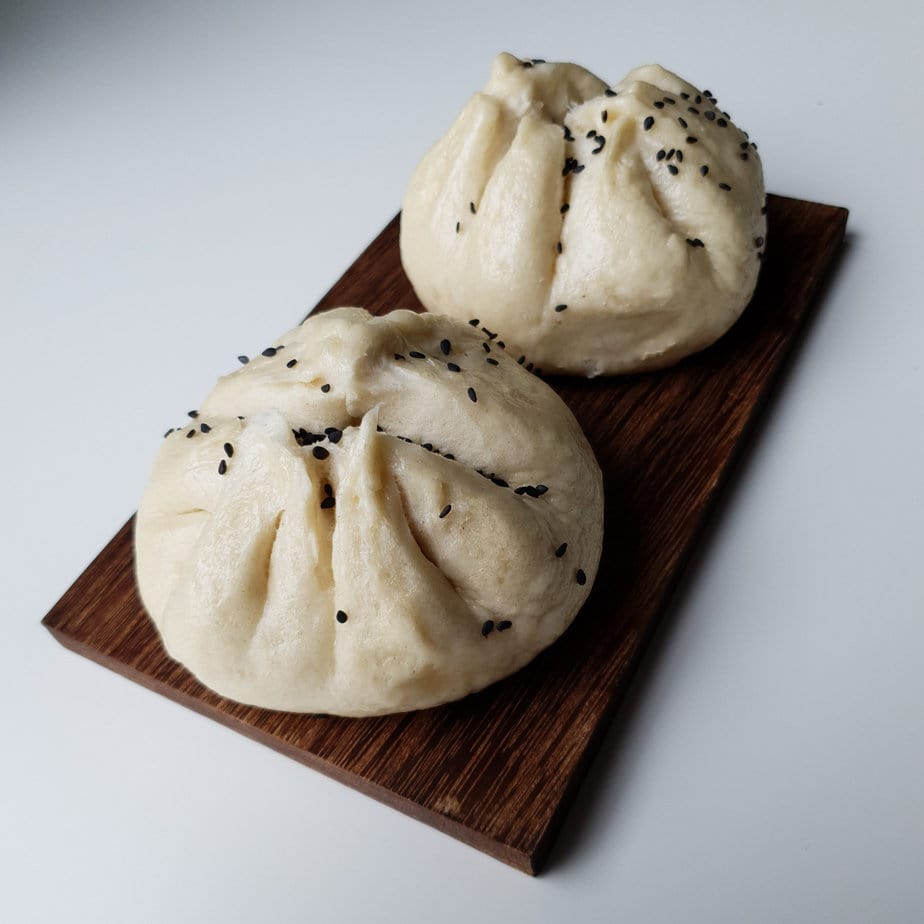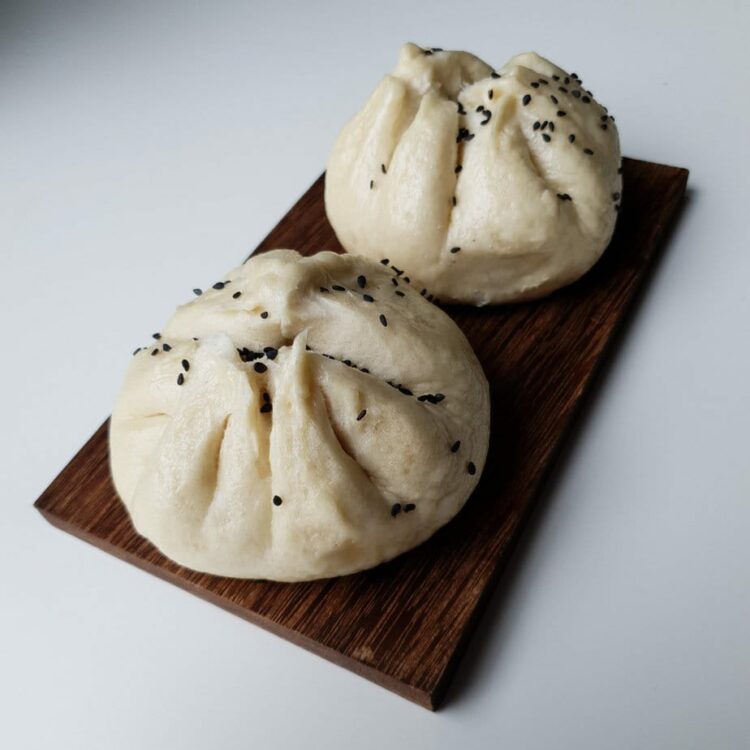Lift the lid off a bamboo steamer, whether you’re wandering through Beijing’s hutongs or standing in front of a Flushing food court. The same scene unfolds: a hiss of steam, a cloud of warm wheat aroma, and rows of plump, glossy buns. Vendors move quickly—lids clatter, tongs click together.
The bao, or baozi, is one of the most popular dishes in China (and one of my favorites too). Everything about it is delicious: from the pillowy texture of the dough to the rich, deeply flavored filling perfected over countless tries.
Behind the humble trio of flour, water, and minced meat lies a craft so codified that, in the North, bakers still count the folds to judge the quality of a bun. In a country where cafés now serve everything from charcoal crepes to truffle fries, debates over what makes an authentic baozi still light up online forums. It’s about more than just lunch: biting into the perfect baozi is tasting eighteen centuries of Chinese culinary ingenuity and everyday comfort food.

From Mantou Myths to Imperial Menus: 1,800 Years of History
The first tale of the stuffed bun is a story of both strategy and sacrifice. Around the 3rd century AD, strategist Zhuge Liang is said to have wrapped dough around meat to mimic human heads, then tossed the buns into a raging river so the spirits would grant his troops safe passage. Whether true or not, this story plants the idea that wheat dough can wrap up meaning just as well as filling.
During the Song dynasty (960–1279), the word “baozi” appears in market records alongside combinations any chef would dream of: lamb mantou, crab eggs, even pork confit with sugar. In Tang dynasty Chang’an, palace cooks took things further, tucking bear fat and venison into a delicacy called yújiānmian: according to the Tang Gastronomic Annals, the imperial court demanded luxury even in a bun.
Fast forward to the end of the Qing dynasty. In 1858, the port and railway city of Tianjin saw the birth of Goubuli, the shop that defined the modern northern style: semi-leavened dough, extra-juicy pork, and, by local tradition, exactly eighteen folds. Later, as the railways expanded, street vendors made Goubuli buns famous in northern train stations. Over the centuries, baozi has gone from ritual offering to street snack, but every steamy cloud still carries a whiff of legend and lineage.
How to Spot Real Baozi
The dough starts with high-gluten wheat flour, water, and a bit of old starter (or baker’s yeast) from the previous day. The dough is only half-proofed before a splash of alkaline water calms it down, neutralizing acidity and tightening the gluten network so the cooked crumb stays both airy and elastic. The ideal dough should be the color of a raw cashew, never the bright white of char siu Cantonese bao, stars of dim sum, which get their hue from bleached flour and often a touch of baking powder.
The pleating is a practiced choreography. Skilled vendors guide the dough disc through a slow, spiraling pinch until a crown of folds (traditionally eighteen in Tianjin) seals the bun. A seam that bursts open in the steamer is a visible slip—craftsmanship is part of the flavor.
Inside, the filling is almost liquid. Coarsely chopped pork shoulder (about 70% lean to 30% fat) is mixed with chilled broth until it soaks up nearly a fifth of its own weight, turning glossy and elastic. Soy sauce, Shaoxing wine, ginger, and scallion add depth; a final drizzle of toasted sesame oil rounds out the flavor.
Vegetables (cabbage, radish, or fennel greens in winter) are salted and squeezed dry before joining the meat. The goal: a “juicy-filling” center that bursts with savory broth as soon as you bite through the skin. Purists may argue over starter versus instant yeast, but they agree on one rule: thin skin, generous filling, and always steamed—never baked.
Different Types of Baozi
Hop on an early morning train in any direction and the definition of baozi expands. In Tianjin, the classic pork-filled bun shares the steamer with “Three Delicacies” versions scented with shrimp and egg.
Shanghai prefers an almost translucent, barely leavened wrapper for xiaolongbao, or fries the dough to get a crispy, sesame-studded bottom in shengjianbao. Cantonese cooks bleach their flour, sweeten the dough, and let char siu sauce tint the crumb a reddish bronze, with the top splitting into three signature cracks.

Head west and Uyghur vendors slap their lamb-filled kao baozi against the scorching walls of a tandoor. Beyond the South China Sea, Malaysian pau are stuffed with potato curry fragrant with turmeric, while Filipino siopao enclose adobo chicken braised in soy sauce.

According to food ethnologist Yan X. Li (Nanjing University) and several studies published in Food Heritage, as soon as wheat dough isn’t steamed, the dish is no longer a baozi. Diversity doesn’t dilute identity; it proves a single idea can adapt without losing its soft soul.
Tips for Making Bao
It’s important to measure carefully when making the dough! That said, depending on the type of flour you use, the amount of water needed can vary. Only experience will help you find the right balance.
If your dough is sticky, dust your work surfaces with cornstarch—it works wonders!
Honestly, this recipe takes time to make, but that just makes it even more satisfying when you finally take a big bite. It’s simply divine.
I use a very similar filling for my Chinese dumplings

Ingredients
Dough
- 250 g all-purpose flour
- 5 g salt
- 8 g sugar
- 4 g instant yeast
- 3 g baking powder
- 130 g water
Filling
- 140 g Napa cabbage
- 2 scallions
- 400 g ground pork
- 3 tablespoons light soy sauce
- 1 teaspoon sesame oil
- 1 teaspoon Shaoxing wine
- 0.5 teaspoon minced ginger
- 1 teaspoon salt
- 2 eggs
- 1 tablespoon cornstarch
- 3 tablespoons water or pork/chicken broth
Instructions
Filling
- Blanch the cabbage in boiling water for 5 minutes, then let cool.
- Meanwhile, finely chop and combine everything except the pork.
- Finely chop the cabbage, squeeze out the excess water, and add to the mixture.
- Add the pork and stir vigorously with a spoon for 5 minutes, always in the same direction. Refrigerate for at least 1 hour.
Dough
- Combine all dough ingredients, knead for 10 minutes, then let rise until doubled, about 1 hour.
- Divide the dough into 4 equal balls, roll out, and shape the baozi with the filling.
- Steam for 15 minutes.

